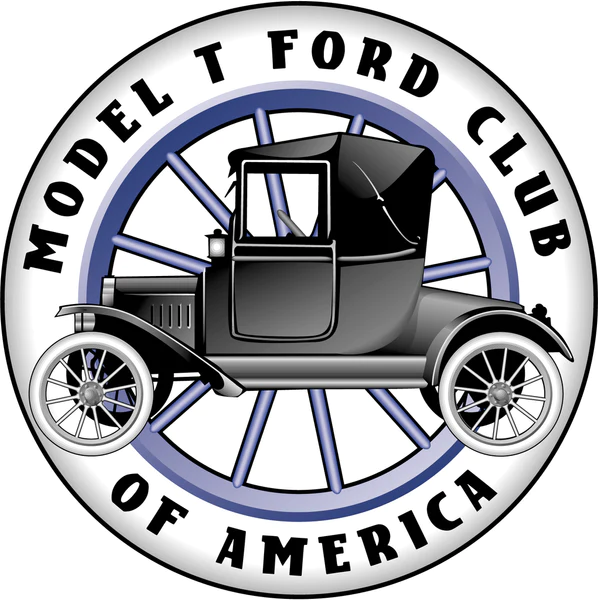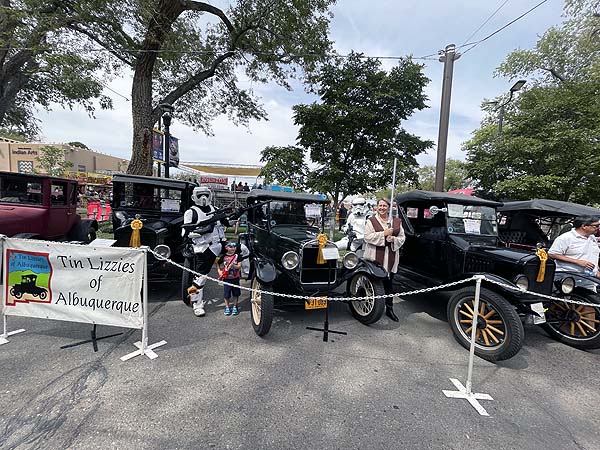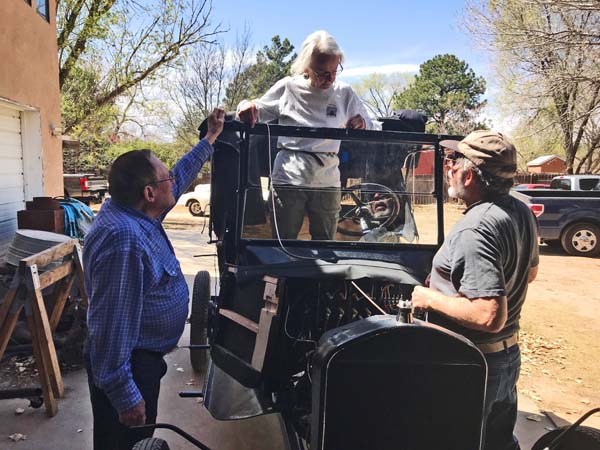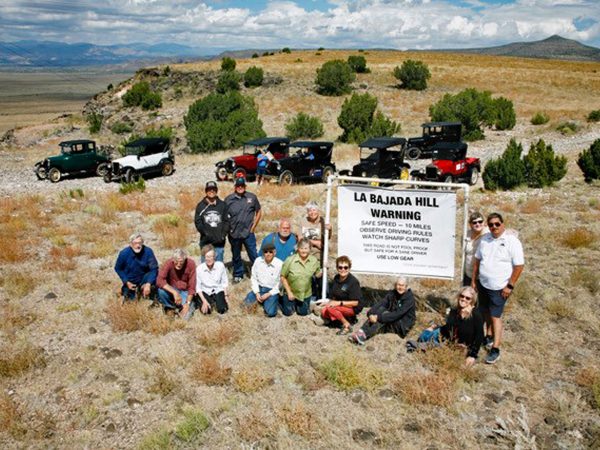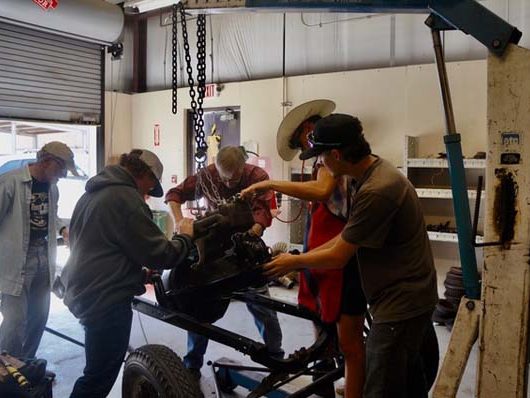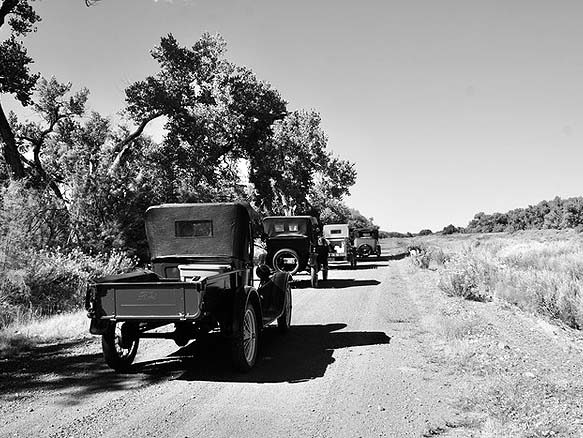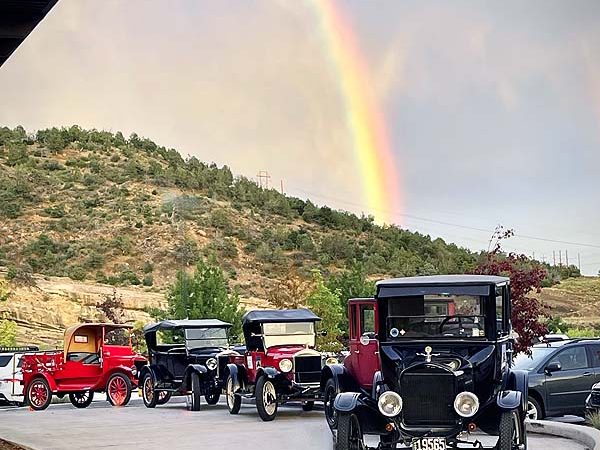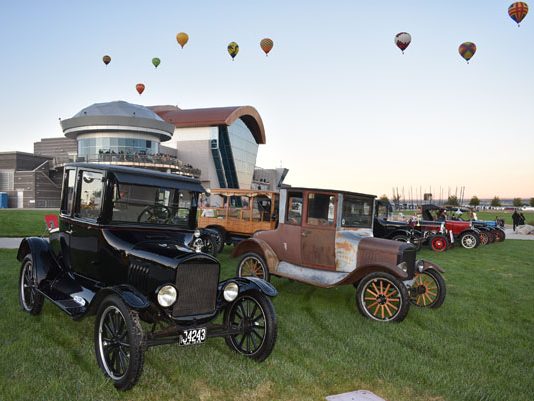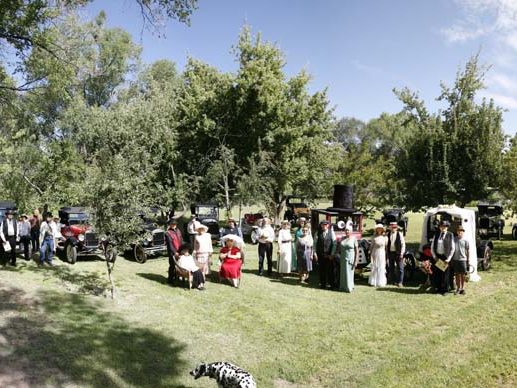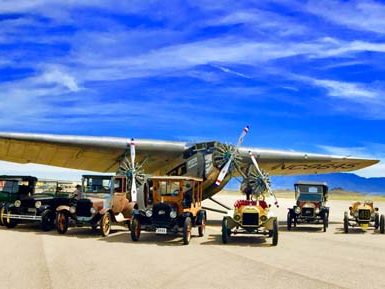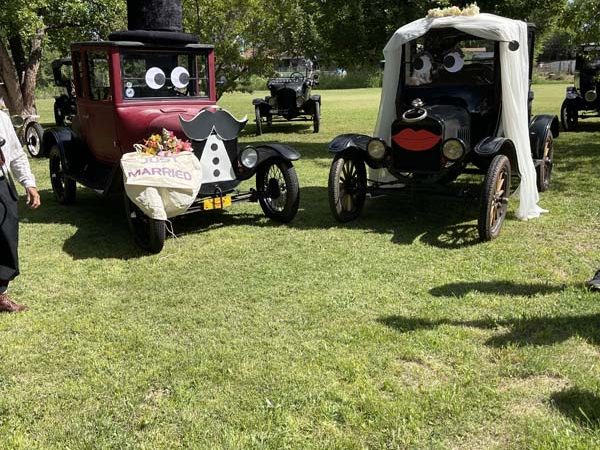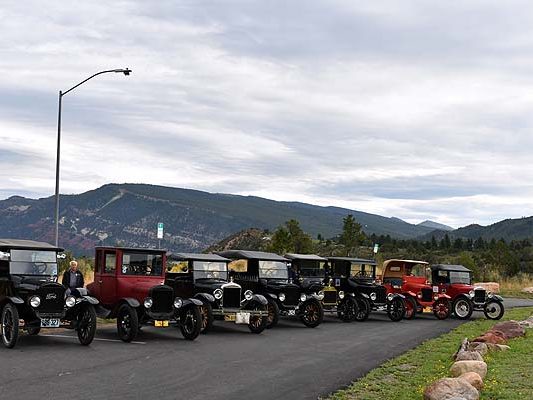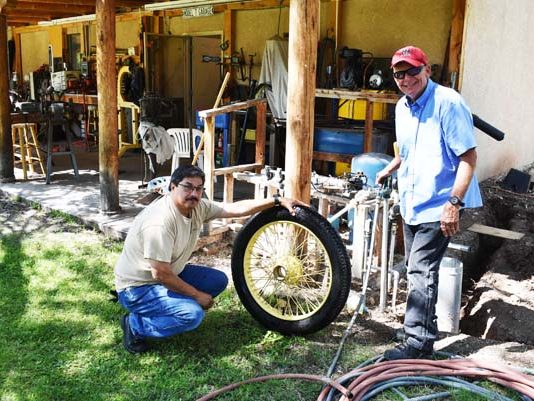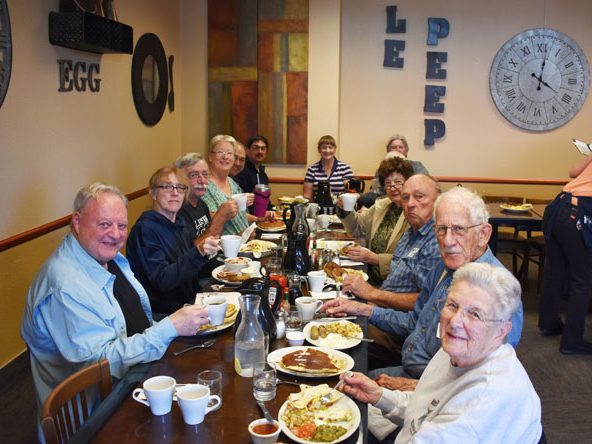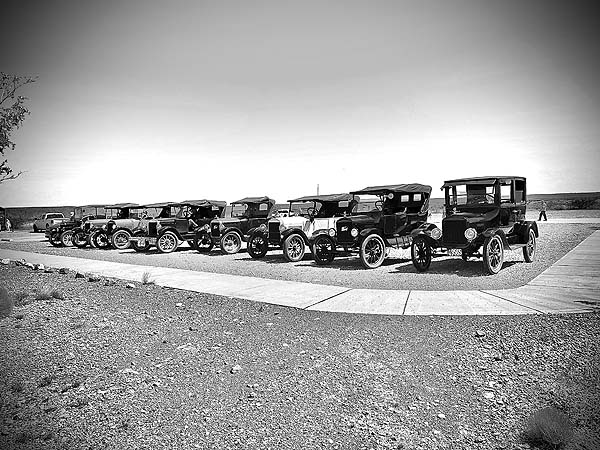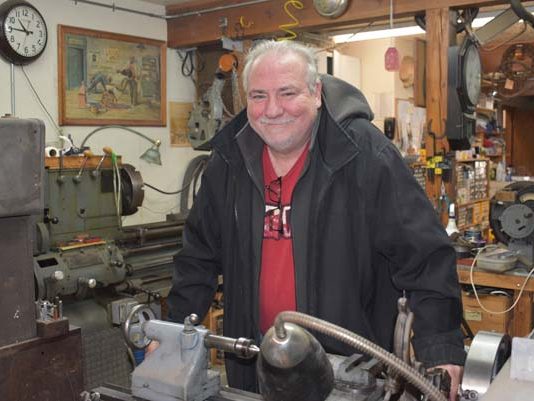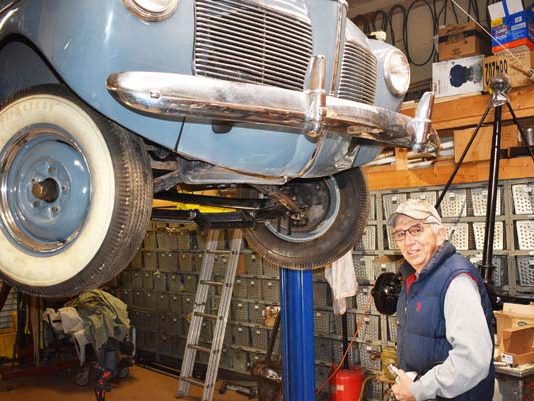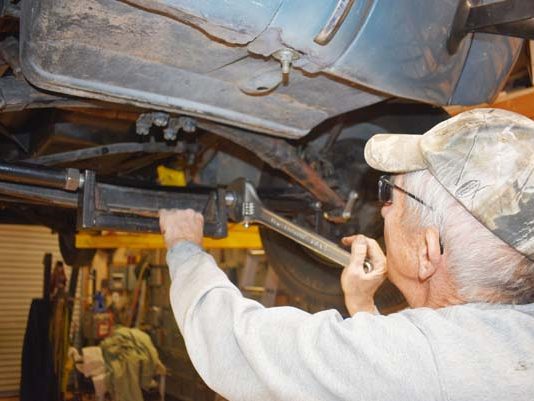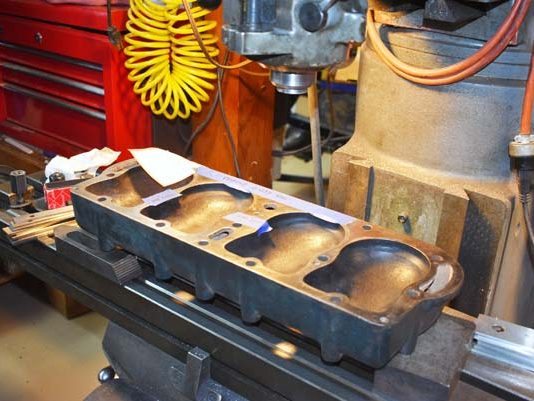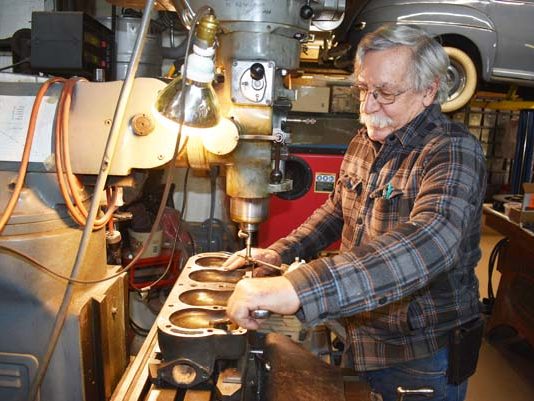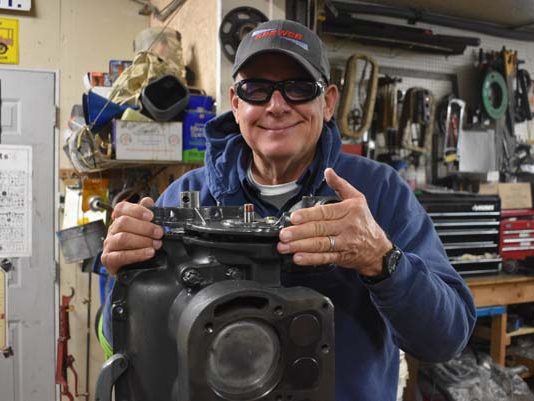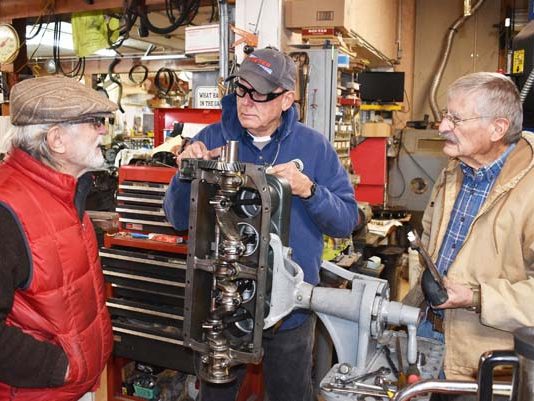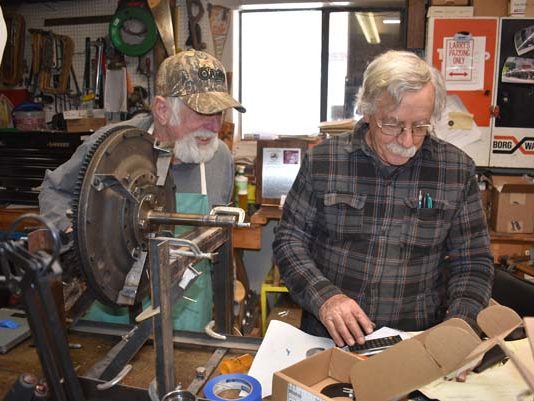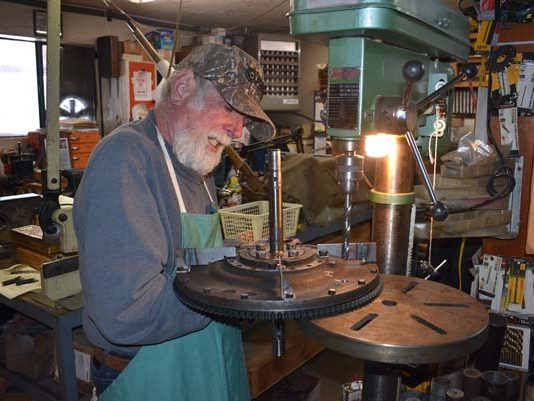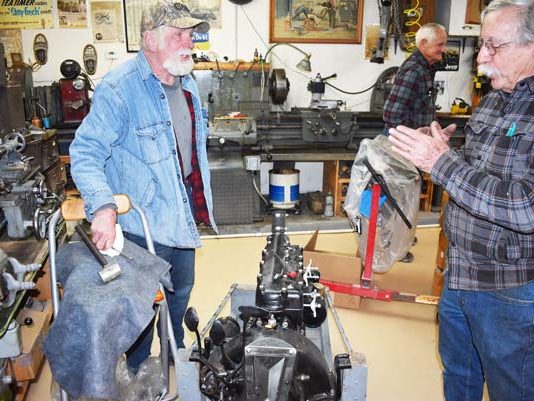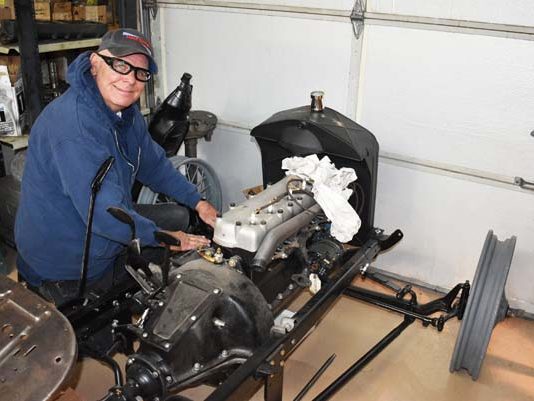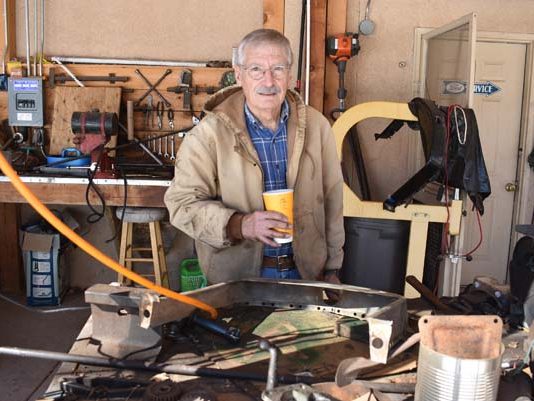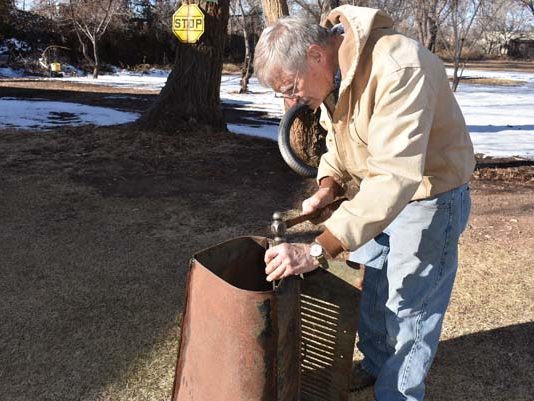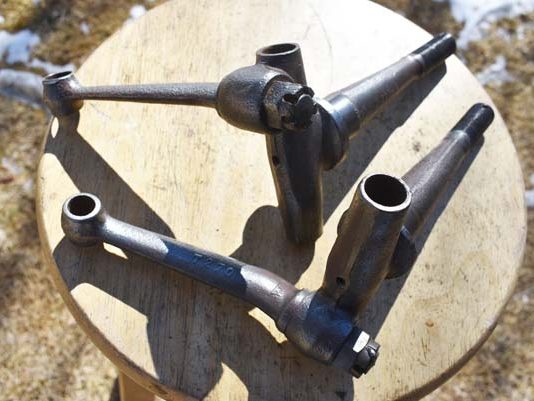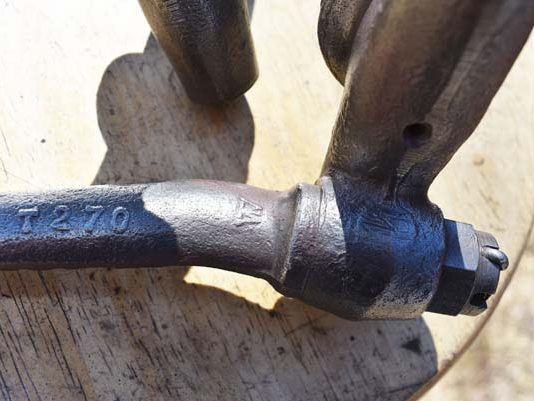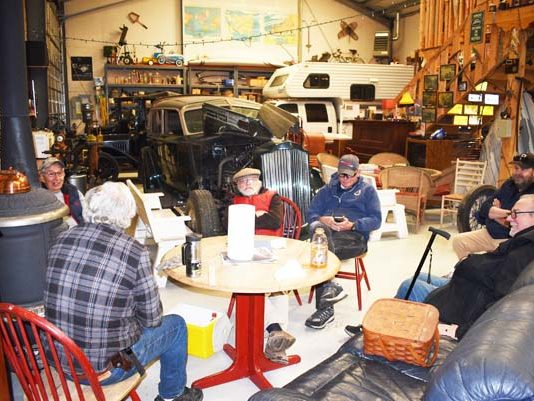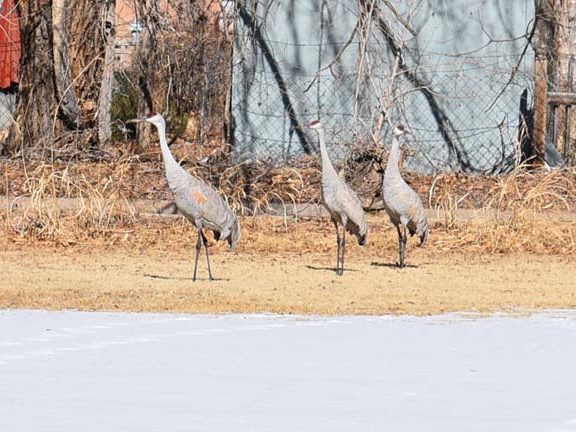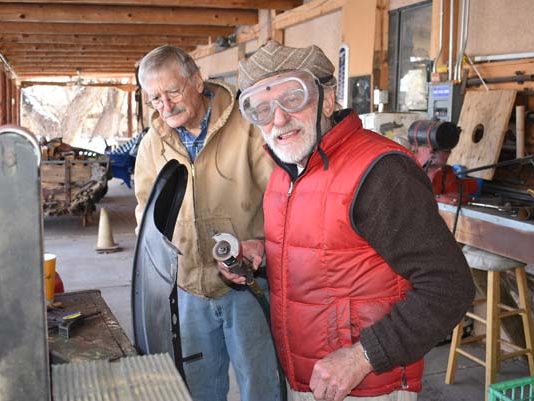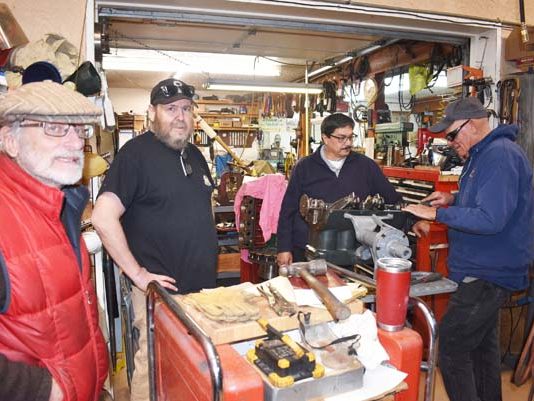Story and photos by Mark Wing
Larry held a workday at his garage in Corrales, NM on February 5th. Joining us for the first time was Bruce Kelly, a car enthusiast and engineer at Sandia National Laboratories. Bruce came at a good time as there were several projects undertaken on this day including work on a 1941 Mercury sedan, milling of a Model T head, work on a camshaft cover, balancing of a flywheel, modifications to a radiator shell and hood, restoration of spindles, and trimming of a front fender.
Frank Lewark had purchased a 1941 Mercury sedan that Larry has owned and restored some years ago. To make the Mercury roadworthy for the trip from Corrales to Frank’s home in Lemitar, NM, the car’s suspension system needed repairs. On this day, Frank was replacing parts in the front suspension system. Other club members were assisting him on this task when needed.
In preparation for his 1925 runabout entry in this year’s Montana 500 race, Larry was using his Bridgeport milling machine to remove up to 0.037” of material from the bottom of his cast iron head to increase compression. This process was an exercise in patience as he could only remove approximately 0.003” – 0.004” at a time.
Kirk Peterson was also working on his engine for the Montana 500 race. On this day, Kirk was cutting and installing an oil seal in his camshaft cover.
Jim Glover has been working on a 1918 Model T project and was in the process of restoring the car’s transmission. Using Larry’s balancing fixture, with two rails for the flywheel to balance on, he and Jim could determine where the flywheel was too heavy. Larry calculated the amount of material that needed to be removed and Jim used a drill press to drill a hole in the area of the heavy side. Jim was also assisting club member Les Haley (Amarillo, TX) by helping to dismantle Les’ Model T engine that had a cracked block that would need replacement.
Dave Ferro was working on his 1926/27 speedster project. To achieve a lower profile for the car, Dave used a dropped front axle and lowering brackets for the rear cross member. In addition, Dave is using a low radiator which required modifications to a high radiator shell that he had. Dave cut approximately 1.5 inches from each side of the shell to fit it to the radiator. Dave also had a 1926/27 hood that he needed to take apart. For this build, he only needs the two top pieces and not the sides. The rusty hinges were treated with a penetrating oil and were starting to move when hit with a hammer and drift. To make disassembly easier Dave decided to let the penetrating oil do its work and will finish the job later.
Mark Wing brought a Transue Williams (TW) front axle for evaluation as well as two TW spindles in need of new brass bushings. The front axle is correct for his 1915 Coupelet project and will need to have both upper Kingpin bearing surfaces bored out and new bushings installed. One of the lower kingpin treads will have to be bored out and a helicoil installed. The spindles received new bronze bushings that were pressed in place and are ready for final reaming.
Paul Duncan brought a front fender in need of some modifications for his 1918 pickup truck project. This fender was an older style, with a reinforcing bead running on the exterior of the splash apron, but strangely, also included the V-shaped forward-facing element that blends the fender into the lower part of a radiator shell, common to 1925 style fenders. As this V-shaped feature didn’t match the other fender for the car, Paul and Dave used a rotary cutter to remove this extra sheet metal. Pliers and a hammer on an anvil were employed to re-establish the folded fender edge.
Thanks Larry for an active and productive workday!
